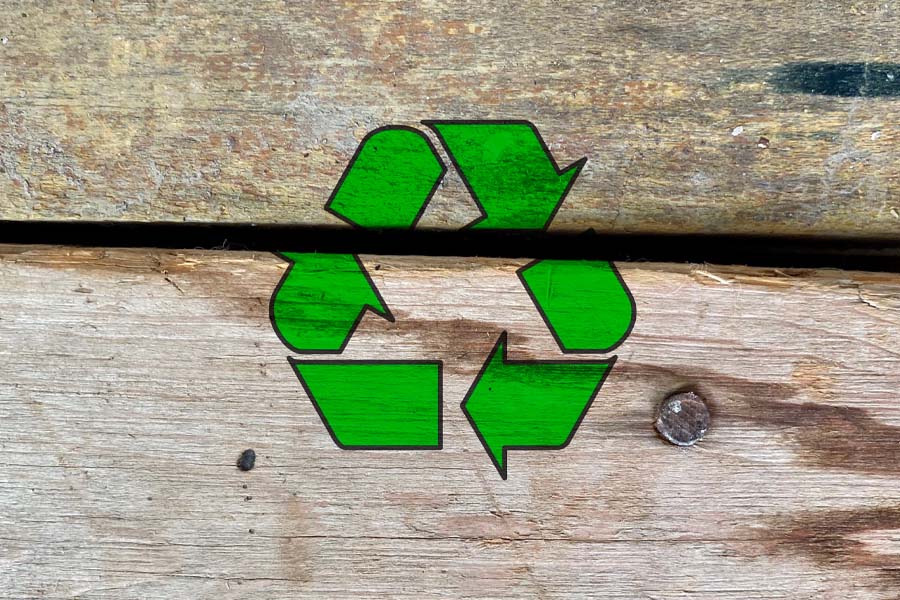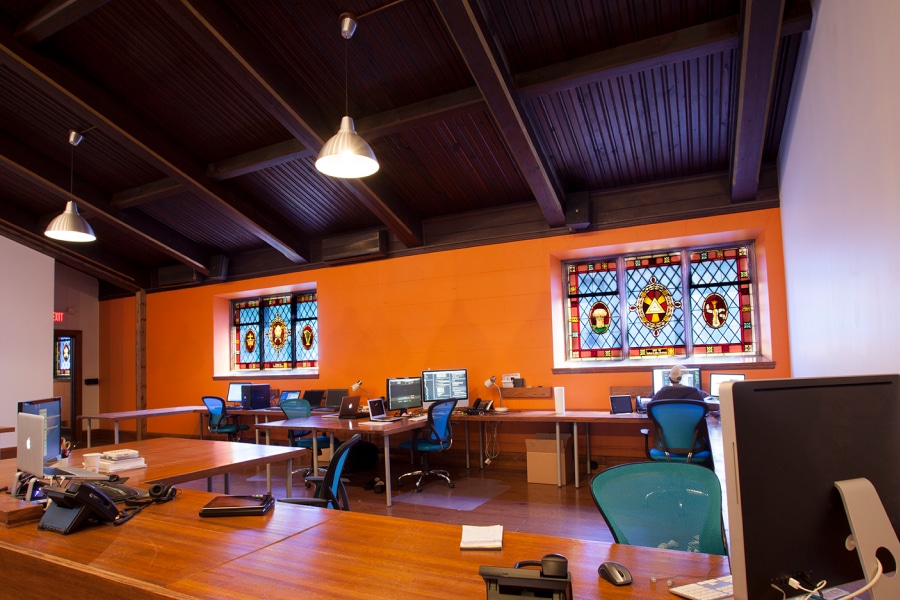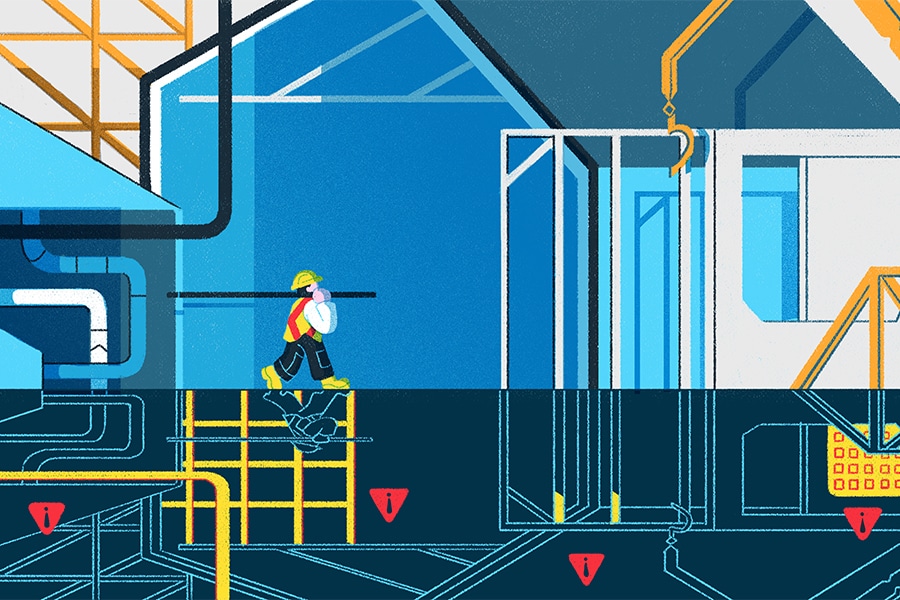Illustration by Wenjia Tang
Climate change has left no region on Earth untouched. The results—rising seas and floods, droughts, wildfires and heat waves—are seen across the planet. And the issues are accelerating. COP26, the 2021 United Nations Climate Change Conference, made clear the urgent need to act now to keep temperatures from rising a catastrophic 3 degrees C by 2100.
That challenge falls not only to governments but to the private sector as well. In the construction industry, clients, investors, employees and building occupants are all paying increased attention to sustainability initiatives.
The dirty little secret
One firm making inroads on emissions is Lendlease, headquartered in Barangaroo, New South Wales, Australia. By 2025, Lendlease plans to eliminate emissions from the fuel the company burns and power it consumes, according to the Lendlease Sustainability website. But those emissions are the easy ones.
Where firms must focus to make a true impact are emissions produced during the manufacture and lifecycle of construction materials. Without diligent effort, this embodied carbon will rise along with the increase in construction to meet the needs of the growing global population.
Approximately 90% of Lendlease emissions come from embodied carbon in concrete, steel and aluminum from suppliers. The company’s “Mission Zero” program aims to reduce embodied carbon and achieve absolute zero for all emissions by 2040. The testbed for low embodied carbon concrete is The Reed in Chicago, a structure planned for 41 stories and 440 residences in the Lendlease Southbank community.
The concrete conundrum
Concrete is the most prevalent manmade material on the planet, according to the Zero Energy Project. It’s essential for strength, flexibility and durability in structures and can last centuries, as the Roman aqueducts attest.
But producing Portland cement, the primary binder, results in enormous energy use to heat limestone and produce clinker. The massive release of carbon from limestone makes up 8% of carbon dioxide emissions worldwide. Even more emissions occur during the manufacture of concrete itself.
That immense contribution to global warming has everyone—from property developers to general contractors; ready-mix concrete companies to construction firms—looking for ways to make concrete greener.
From aspiration to specification
Lendlease performed a Climate-Related Risks & Opportunities Assessment for The Reed to inform the company’s approach to mitigating climate change and meet its embodied carbon targets. Lendlease then turned to McHugh Concrete to help achieve its goals.
“They’ve taken low-embodied carbon concrete from a wish and a want to a must and a have-to,” said Eamonn Connolly, SE, PE, LEED AP, director of engineering at McHugh Engineering Group, “and they’ve done so in project documents that have requirements and mandatory language.”
McHugh Concrete worked with Oremus Material in Chicago to create a proprietary green concrete mix specifically for The Reed. “The mixes we’ve developed are primarily based on slag from steelmaking, which is usually landfill waste,” Connolly said. “That’s ground into a reactive fine powder that behaves very similarly to Portland cement.”
The mix replaces as much as 60% of the Portland cement used in the concrete. That exchange makes the concrete’s global warming potential (GWP)—the measure of carbon dioxide emitted into the atmosphere by creating a material—32% lower than the average concrete produced by members of the National Ready Mixed Concrete Association. The result is also 14% lower than the requirements Lendlease specified.
Performance and aesthetic properties
Replacing a high portion of the Portland cement changes characteristics as well. The increased density makes the green concrete more impervious to outside contaminants and more durable than traditional concrete.
The highly flowable, self-consolidating mixes are easy to pump and place, and result in green concrete with fewer voids and honeycombing. The resulting pale and smooth concrete offers an appearance many prefer to traditional concrete’s mottled gray.
Set times to high early strength are rapid, on the order of a couple of hours. The team can walk on the floor later the same day and start setting columns and walls. “We’re able to stress it within 18 hours, even in the depths of the Chicago winter,” Connolly said.
Combining strategies for an ultimate solution
Replacing or reducing clinker is just a start, however. A report by Imperial College London notes that deep decarbonization will require going further, according to Professor Paul Fennell of the Department of Chemical Engineering. In addition to new recipes for cement, proposed modifications include better energy efficiency and alternative fuels to power manufacturing processes.
Carbon capture and storage offers another strategy—but more effective still may be carbon capture and use to strengthen concrete. The ultimate solution would be to make a cement that actually takes up carbon.
Fennell and his co-authors believe that’s possible. They estimate that emissions could drop from 80% to as low as negative 50% of current levels with the right combination of strategies. Complementary approaches may be what it takes to achieve zero concrete carbon emissions by 2050 and meet the goals of the Paris Agreement.














